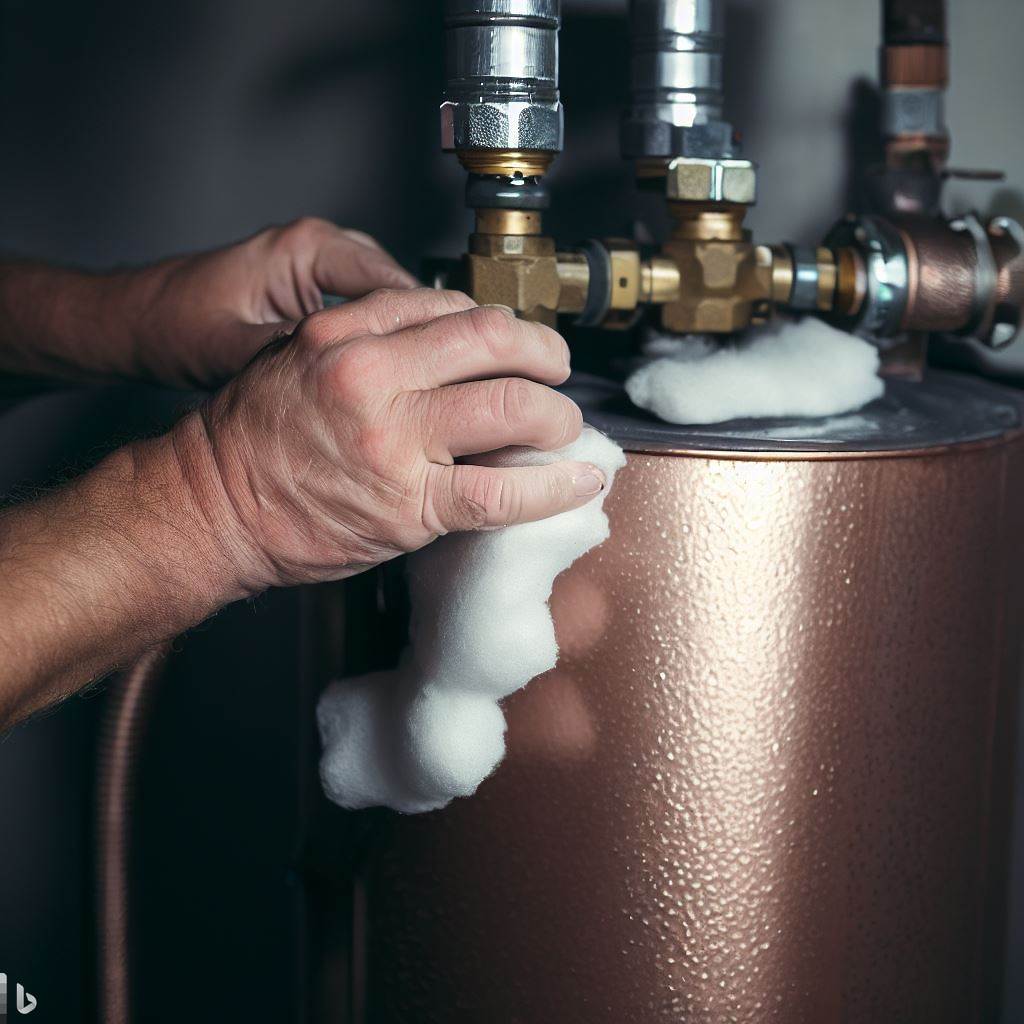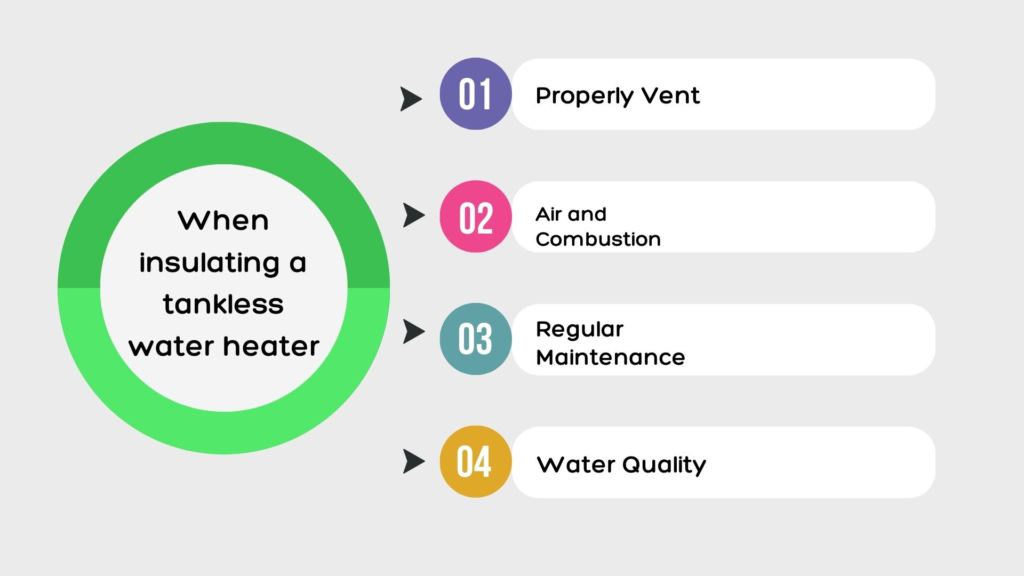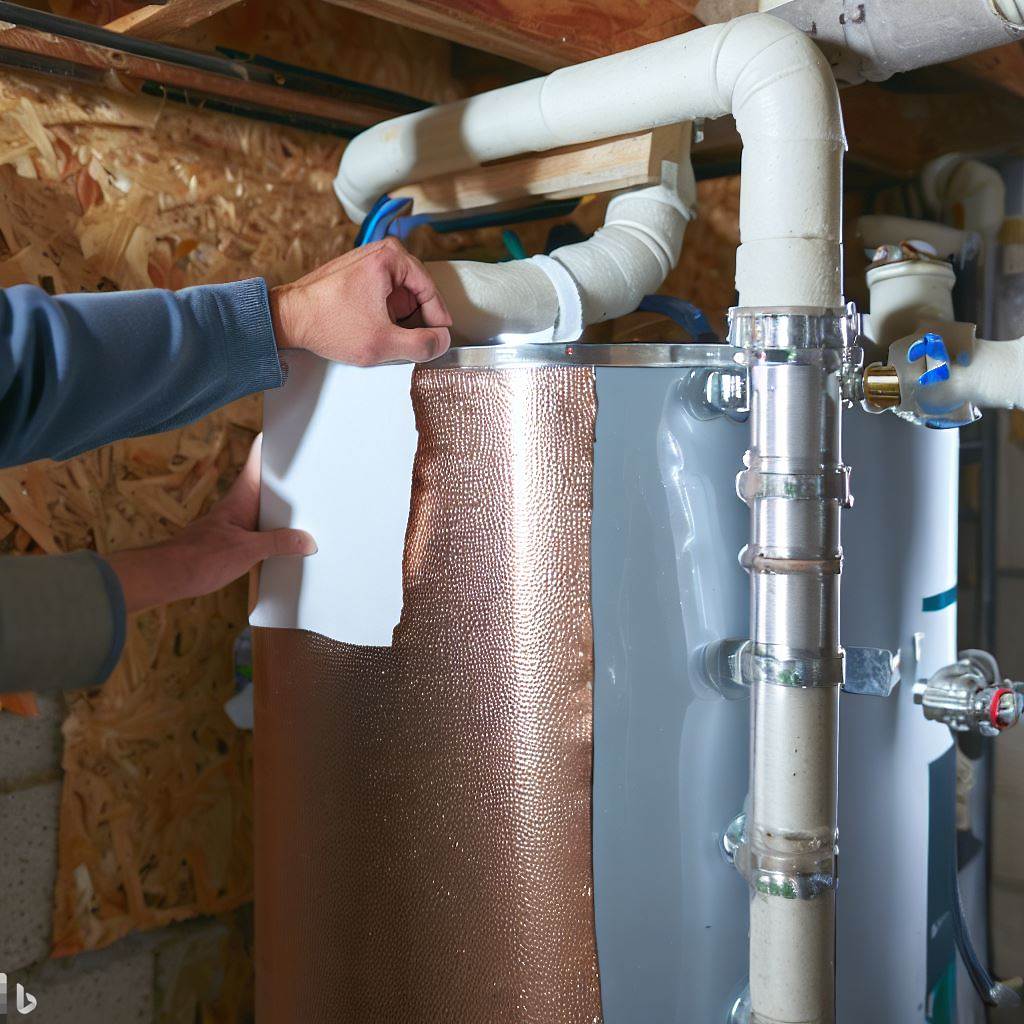Table of Contents
Tankless water heaters are becoming popular for their energy efficiency and convenience. But, many don’t know the importance of insulating them properly. Here we will talk about the advantages of insulating your tankless water heater and how to do it correctly.
Insulating a tankless water heater is important for various reasons. Primarily, it reduces heat loss which keeps the hot water hot for longer. This saves energy in the long run. Also, it prevents damage from freezing temperatures in winter.
There are various ways to insulate your tankless water heater. You can buy an insulation blanket designed for these units. It’s simple to install and provides great insulation, trapping heat inside.
Another option is to put foam pipe insulation around the hot and cold water pipes connected to the heater. This stops heat loss through the pipes and makes sure the hot water reaches the faucets quickly.
Apart from insulation, there are a few other steps you can take to get the most out of your tankless water heater. Regular maintenance, like flushing the system and checking for leaks or clogs, is essential.

Key Notes
- Insulating a tankless water heater can help improve its energy efficiency and reduce heat loss.
- The insulation material used should have a high R-value to provide effective insulation.
- The insulation should be installed around the pipes and the unit itself to prevent heat loss.
- It is important to follow the manufacturer’s guidelines and recommendations when insulating a tankless water heater.
- Regular maintenance and cleaning of the unit is necessary to ensure optimal performance and efficiency.
Understanding Tankless Water Heaters
Tankless water heaters offer an efficient and handy way to heat water in both homes and businesses. They don’t need a tank, saving space and energy. But how do they work? Unlike traditional water heaters, tankless water heaters only heat water when needed.
Thus, they prevent standby energy losses by continuously heating a tank of water. Plus, they offer a continuous supply of hot water if sized for the home’s needs. Tankless water heaters can be powered by gas or electricity.
Gas units need venting to remove combustion gases from the home. Direct venting or power venting systems can be used for this purpose. Consider installation costs, available space for vents, and proximity to windows or doors before selecting either direct vent or power vent systems.
Tankless water heaters have a longer lifespan than traditional tanks due to their compact design and lack of stored water. But, periodic cleaning or descaling may be needed depending on water hardness.
Did you know that some tankless water heaters can be connected in series to provide more capacity? So multiple units can be installed together if one isn’t enough. Tankless water heaters can also save energy and lower utility bills compared to traditional tanks.
The concept of tankless water heaters dates back centuries. Modern tankless water heaters were developed in the 1920s, thanks to engineer Stiebel Eltron. Since then, tankless water heaters have been evolving and improving, becoming widely used in homes and businesses all over the world.
Factors to Consider Before Insulating a Tankless Water Heater
It’s key to insulating a tankless water heater for better performance and energy efficiency. First, take into account the location and venting system of your tankless water heater. If it’s installed in an unconditioned space, like an attic or garage, you should insulate it. Power vent models need special vent pipe configs, so make sure the insulation won’t obstruct them. Plus, look at the climate – if it’s cold, insulating can protect against freezing and damage. Lastly, refer to the manufacturer’s guidelines before insulation.
Also, I remember a friend of mine who didn’t check his location and venting systems. He blocked the air intake and exhaust vents with insulation which caused poor combustion and the safety shut-off device to kick in. This resulted in costly repairs and frustration, so always follow the guidelines and consult pros when you insulate. Insulating is important to avoid a hot mess and save money!
Why Insulate a Tankless Water Heater?
Insulating a tankless water heater is key to maximizing its efficiency and performance. You can cut down on heat loss, lower energy consumption, and save money on bills. The insulation helps retain the hot water’s warmth, so you can get hot water more quickly.
The benefits don’t stop there. Insulating a tankless water heater also cuts standby heat loss when the unit isn’t in use. Plus, it shields the surrounding area from excess heat and reduces noise levels.
It’s essential to know that each tankless water heater might need unique insulation methods depending on design and material. Check the manufacturer’s guidelines or get expert help for the right insulation techniques for your model.
To sum it up, insulating a tankless water heater offers many advantages, such as increased energy efficiency, minimized standby heat loss, improved comfort, and reduced operational noise. The DOE says insulating a tankless water heater correctly can even result in energy savings of 10-20%. So, don’t write off insulating a tankless water heater as a fruitless endeavor.
Steps to Insulate a Tankless Water Heater
Insulating your tankless water heater is essential for optimal efficiency and reduced energy costs. Here’s a step-by-step guide:
- Turn off the power supply to the water heater for safety.
- Measure your unit with a measuring tape. Buy an insulation blanket or jacket that fits your unit’s size.
- Wrap the insulation around the tankless water heater and secure it with duct tape. Make sure there are no gaps for heat to escape.
- Turn on the power supply and monitor for any changes in performance or energy consumption.
Remember, proper venting is crucial for gas-powered tankless water heaters. Make sure you meet local building codes and manufacturer recommendations for safe operation.
Pro Tip: Get a professional plumber or HVAC technician to help with insulation and maintenance. They can provide advice and ensure optimal performance with reduced energy costs.
Additional Tips and Considerations
When insulating a tankless water heater, there are more points to keep in mind.

- 1. Properly Vent: Ensure the water heater is vented correctly. If unsure, hire a plumber.
- 2. Air and Combustion: Maintain airflow around the heater. Don’t block it with items.
- 3. Regular Maintenance: Schedule regular maintenance, like flushing, checking for leaks, and cleaning.
- 4. Water Quality: Install a water softener in areas with hard water. Minerals can reduce efficiency.
Insulating can offer more than energy savings. It helps reduce heat loss during standby, lowers installation costs, and allows for flexible placement.
To insulate:
- 1. Wrap exposed pipes with insulation materials designed for hot water pipes.
- 2. Insulate gas lines with approved materials.
- 3. Use an insulation blanket for the outer housing.
- 4. Follow safety guidelines, and consult a plumber or the manufacturer.
Follow these tips to get the most from your tankless water heater. And if you don’t find it humorous, at least it’ll keep you warm!

Frequently Asked Questions
1. When do you need a power vent water heater?
A power vent water heater is typically needed when it is not possible to vent the water heater directly through a vertical vent or chimney. It is used in situations where the distance between the water heater and the venting location is too great or involves multiple turns.
2. What does a power vent do on a water heater?
A power vent on a water heater uses a fan or blower to mechanically exhaust the combustion gases and excess heat from the water heater through a venting system. It helps maintain proper air quality indoors and reduces the risk of carbon monoxide poisoning.
3. Is a power vent water heater worth it?
A power vent water heater is worth considering if your home’s existing venting system is not suitable for a standard atmospheric vent water heater. While it may have higher installation costs, the convenience and flexibility it offers make it a popular choice.
4. What are the pros and cons of power vent water heaters?
Pros of power vent water heaters include their ability to be vented horizontally, reduced risk of back-drafting, and the ability to locate the water heater farther from the venting location. However, they may have higher upfront costs and require electrical power for the blower or fan.
5. How do direct vents and power vents differ?
A direct vent water heater uses a sealed combustion chamber, drawing in air for combustion and exhausting the combustion gases directly to the outdoors. On the other hand, a power vent water heater relies on a fan or blower to exhaust the gases through a venting system.
6. What type of water heater vents do I need?
The type of water heater vents you need depends on various factors such as the fuel type (gas or electric), existing venting system, and the availability of vertical venting options. It is best to consult a professional plumbing service to determine the most suitable venting system for your water heater.
Conclusion
Insulating a tankless water heater has its pros and cons. On one hand, it can improve energy efficiency and reduce heat loss, leading to potential cost savings. But, if done wrong, it can cause overheating and damage to the unit.
It is important to find out if your tankless water heater requires a power vent. Gas-powered ones, lacking a natural draft or proper combustion air supply, need power vents. These help remove exhaust gases and ensure good ventilation.
Using a power vent water heater is beneficial. They can be vented horizontally through PVC pipes, unlike direct vent systems that need vertical venting. This makes them suitable for places where vertical venting isn’t possible.
However, power-vented water heaters have their drawbacks. They cost more to install, due to the extra components required for the power venting system. Also, they rely on electricity. Thus, during a power outage, there is a risk of hot water supply disruption.
If you already have an existing periscope or concentric venting system for your tankless water heater, you may not need to switch to a power-vented unit. Installing insulation blankets around gas-fired storage-tank water heaters can reduce standby heat losses by 25-45%.
